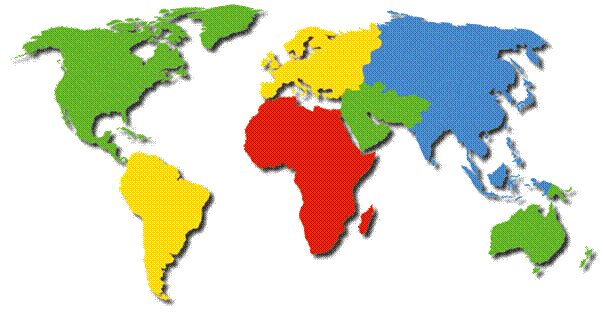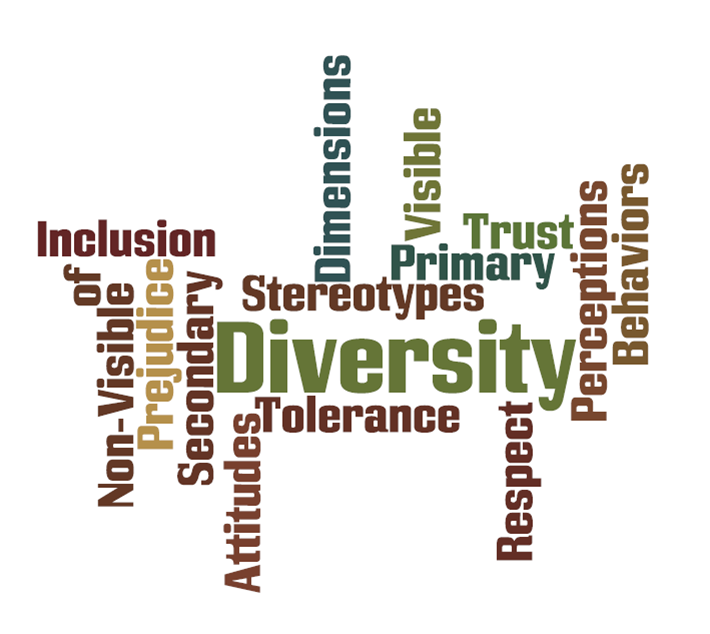Leadership and Diversity
This "conversation" on Leadership and Diversity highlights the fact that diversity is multifaceted. It is simple in concept, yet complex - depending upon the context.
Successful leaders understand the implications of diversity; but even more so, they know how to lead and manage a diverse workforce.
The Diversity At Work Series is designed to help leaders, just like you, harness the potential resident in their people.
Define Diversity
How often do people hear the same word/term, yet have different ways of defining or describing what it means? It happens very often.
So, one of the first things I like to do is get on the same page to prevent confusion based in "semantics."
With that in mind, think of the word "diversity." What does it mean to you? Many times we think of "differences." Differences based on race, gender, age, physical ability, etc.
We may also think that because something is different, it is less than in quality or degree (not as good as its counterpart).
But Merriam-Webster's dictionary defines diversity as "being composed of differing elements or qualities." It relates to "variety" and includes ways in which we are different AND similar.
Bottom line: we are all diverse (or different) - because no two people are exactly the same.
Dimensions of Diversity
Marilyn Loden, in her book "Implementing Diversity," identifies two dimensions of diversity: Primary and Secondary.
Primary Dimensions include gender, race, age, etc. They are those attributes we possess that cannot be changed (or are very difficult to change.) Those things that are "set" from birth.
Secondary dimensions are attributes that can change and include such things as: marital status, income, education, geographic location, etc.
Valuing Differences
Leaders all over the world grapple with this issue of diversity - some struggle more than others in leading and managing a diverse workforce.
Unfortunately, human nature tends to be pre-disposed to judging people based on one element of diversity. This thinking leads to making decisions about what a person can or cannot do, BEFORE giving them the chance to show you what s/he can or cannot do.
Bottom line, one must believe that each member of their team deserves to be treated equitably; that regardless of the dimension of diversity, the person is of value.
Successful leaders are able to deal effectively with a variety of people of all races, nationalities, differing abilities, etc. They are culturally competent.
Leadership and Diversity

Your success as a leader is directly related to your ability to tap into the highest potential of ALL employees. That means being very intentional in "leveling the playing field" so everyone has the opportunity to be their very best.
Want To Know More?
The leader who leads not only values differences, s/he values people. This practice is built on a foundation of respect and dignity, which is treating people as though they are valuable - that they really matter.
Want to know more about leadership and diversity? Please see:
- Leading A Diverse Workforce for more information.
- Leadership and Diversity includes understanding diversity of styles.
- Diversity, Equity & Inclusion
- Diversity and Civil Rights
Improve Your Relationship with Your Boss
Are you looking to improve your relationship with your boss? If so, the Boss Relationship Worksheet will help you better understand and communicate more effectively with your immediate supervisor.
To download your copy, submit your information on the form below.
After completing the Boss Relationship Worksheet, you will find that the following will prove helpful in showing you how to cultivate a better working relationship with your boss:
 |
I published my first book and I am beyond excited.
Get your FREE copy of Called to Lead!
ORDER PRINT HERE

Leaders don't
create
followers.
Leaders
create
other
leaders.
- Tom Peters











